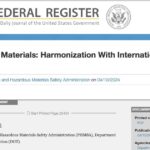Massachusetts Institute of Technology’s Lincoln Laboratory is part of a large study looking to better understand how airborne particles and gasses move and at what concentration they can be detected. The aim is to give emergency management planners, including hazmat officials, better predictive tools.
Multiple agencies with 175 personnel, led by Lincoln Laboratory, collected safe test particles and gasses released in subway stations and on streets, tracking their journeys at 120 locations across all five boroughs of New York City this past October. The exercise measured how far the materials traveled and what their concentrations were when detected.
The study was performed under the Department of Homeland Security Science and Technology Directorate’s (S&T) Urban Threat Dispersion Project. The project is largely driven by the Laboratory’s Counter–Weapons of Mass Destruction (CWMD) Systems Group to improve homeland defenses against airborne threats. This exercise followed a similar, though much smaller, study in 2016 that focused mainly on the subway system within Manhattan.
“The idea was to look at how particles and gasses move through urban environments, starting with a focus on subways,” Mandeep Virdi, a Laboratory researcher who helped lead both studies, said in an MIT article.
The safe particles and gasses used in the study were primarily composed of maltodextrin sugar, and were used in prior public safety exercises. To enable researchers to track the particles, the particles are modified with small amounts of synthetic DNA that acts as a unique “barcode.” This barcode corresponds to the location from which the particle was released and the day of release. When these particles are later collected and analyzed, researchers can know exactly where they came from.
Also Read: Nerve Agents Part II: Response Considerations
The Laboratory team led the process of releasing the particles and collecting the particle samples for analysis. A small sprayer is used to aerosolized the particles into the air. As the particles flow throughout the city, some get trapped in filters set up at the many dispersed collection sites.
The research team is still processing the approximately 5,000 samples that were collected over the five days. The data will feed into existing particle dispersion models to improve simulations. One of these models, from Argonne National Laboratory, focuses on subway environments. Another model, from Los Alamos National Laboratory, simulates above-ground city environments, taking into account buildings and urban canyon air flows.
“The big question has always been, if there is a release and law enforcement can detect it in time, what do you actually do? Do you shut down the subway system? What can you do to mitigate those effects? Knowing that is the end goal,” Virdi says.
A new program, called the Chemical and Biological Defense Testbed, has just kicked off to further investigate those questions. Laboratory researcher Trina Vian is leading this program, also under S&T funding.
Also Read: The Flavor of Hazmat
“Now that we’ve learned more about how material transports through the subway system, this testbed is looking at ways that we can mitigate that transport in a low-regret way,” Vian said in the MIT article.
According to Vian, emergency managers don’t have many options other than to evacuate the area when a biological or chemical sensor is triggered. Yet current sensors tend to have high false-alarm rates, particularly in dirty environments. “You really can’t afford to make that evacuation call in error. Not only do you undermine people’s trust in the system, but also people can become injured, and it may actually be a non-threatening situation.”
The goal of this testbed is to develop architectures and technologies that could allow for a range of appropriate response activities. For example, the team will be looking at ways through which air flow could be constrained or filtered in place, without disrupting traffic, while responders validate an alarm. They’ll also be testing the performance of new chemical and biological sensor technologies.
Original post – Copyright © 2022 HazmatNation.com. Externally linked references may hold their own independent copyright not assumed by HazmatNation











